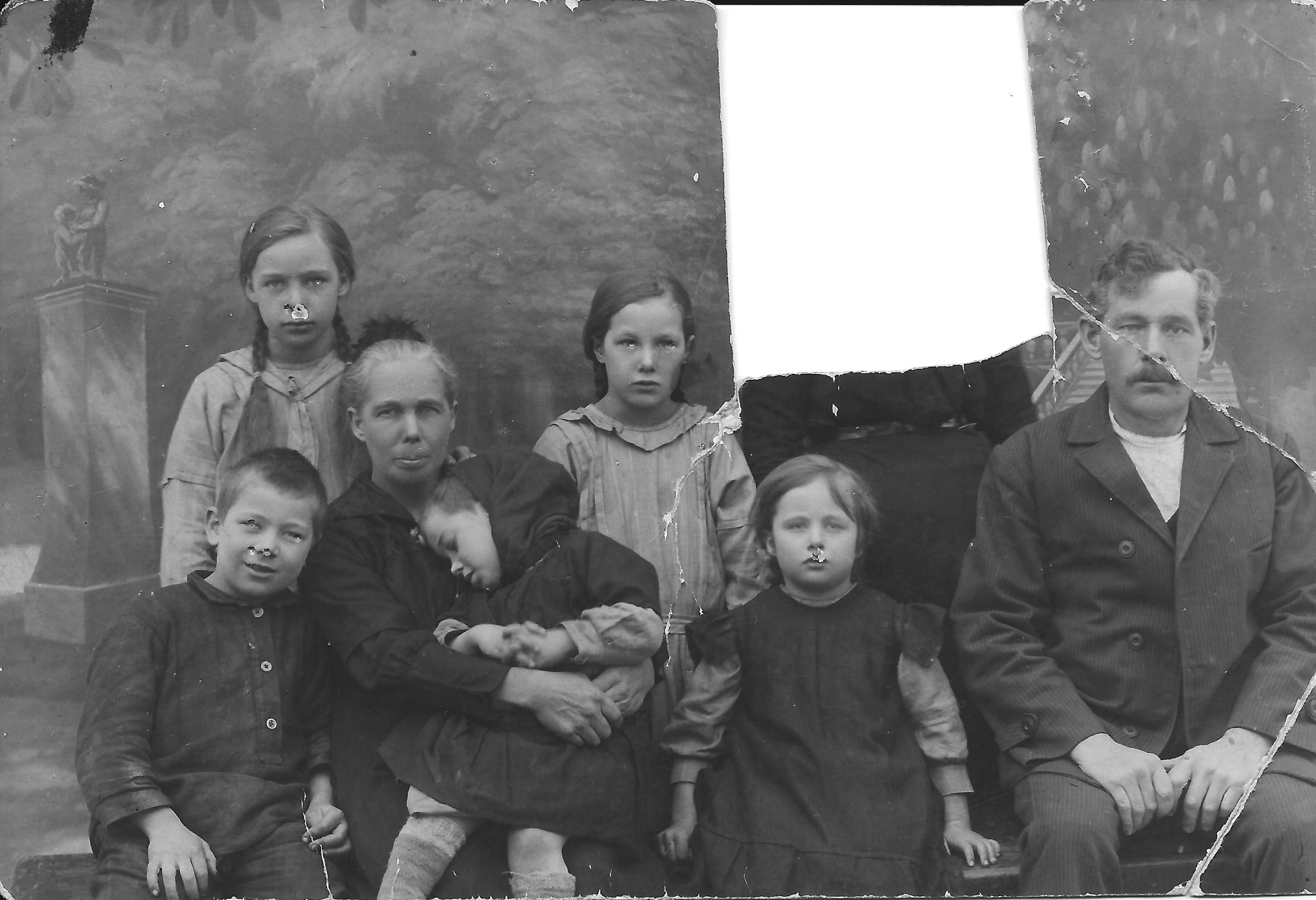Anna Teichroeb and Gerhard Giesbrecht (1882-1943)
Copyright 2022 by Barry Teichroeb. All rights reserved.
My great Grandfather, Peter Teichroeb (1857-1944), moved to Canada from the Mennonite settlement of Fuerstenland in 1925. My grandfather, Dan Teichroeb, (1904-2005) followed a few months later. Peter's first wife, Agatha Dueck (1859-1922) had predeceased him. He remarried not long after her death. His second wife, Maria Dueck (1865-1937), refused to leave Fuerstenland and the family lost contact with her. By 1926 all of Peter's children and their families, with two exceptions, had also moved to Canada. His son Heinrich (1899-1922) had moved west in 1922 and got as far as Germany before contracting Typhus. He died alone in a boarding house at the age of 22. Peter's daughter Anna (1882-?) remained in Fuerstenland with her husband, Gerhard Giesbrecht (1885-1933), and their children.

Anna Teichroeb (1882-?) and Gerhard Giesbrecht (1885-1933) with their children. Back row: Agatha (1913); Maria (1915). Front row: Peter (1917); Margaretha (1922); Anna (1919).
Anna and Gerhard owned a flour mill in Fuerstenland. In the aftermath of the Revolution all privately owned enterprises were nationalized. Anna and Gerhard lost their business but were permitted to remain as workers there.
After 1925 it became difficult for the family in Canada to maintain ties with Anna. Dan Teichroeb would send letters and care packages to his sister in Fuerstenland. For several years the packages were received and acknowledged. Then, around 1934, Dan received a letter by return mail indicating that Anna and Gerhard were deceased.
It was learned many years later that Gerhard had died in 1933 but Anna survived him. After his death letters from Canada were returned.
World War II (1939-1945) created chaotic conditions for the family. German speaking citizens of the USSR were treated badly. It seems that Anna's son Peter was taken away by Russian police in 1941 and never seen or heard from again. Tragic events of this kind were not uncommon. The German army occupied Eastern Ukraine for a time, during which German speaking inhabitants had a brief reprieve from Russian domination and mistreatment. However, when the German military retreated from the occupied territories in 1943 they implemented a policy of relocating German speaking citizens to other German occupied territories further west. This was the experience of Anna and the three youngest of her remaining children. At various times in 1943 they all were moved to Poland and resettled. Her eldest daughter appears to have emigrated to Poland after the war.
This brings us to the photograph shown above. It must have been taken in 1925-26 in Fuerstenland. It was in the possession of Dan Teichroeb (2004-2005) for many years and then kept by his descendants. Someone, at some time, removed an individual from the photo. It is believed that this was the condition of the picture by the time Dan obtained it. No one knows if he brought it with him to Canada, or if his father, Peter, brought it. The figure removed from the picture appears to be a woman dressed in black. Likely this would be an older woman, given the style of dress among older Mennonite woman at that time. If this is a photograph of the last family members remaining in Russia, then the older woman could be Peter's second wife, Maria. She objected strongly to emigrating and possibly she removed her image in defiance of the family that moved to Canada.
Post a comment